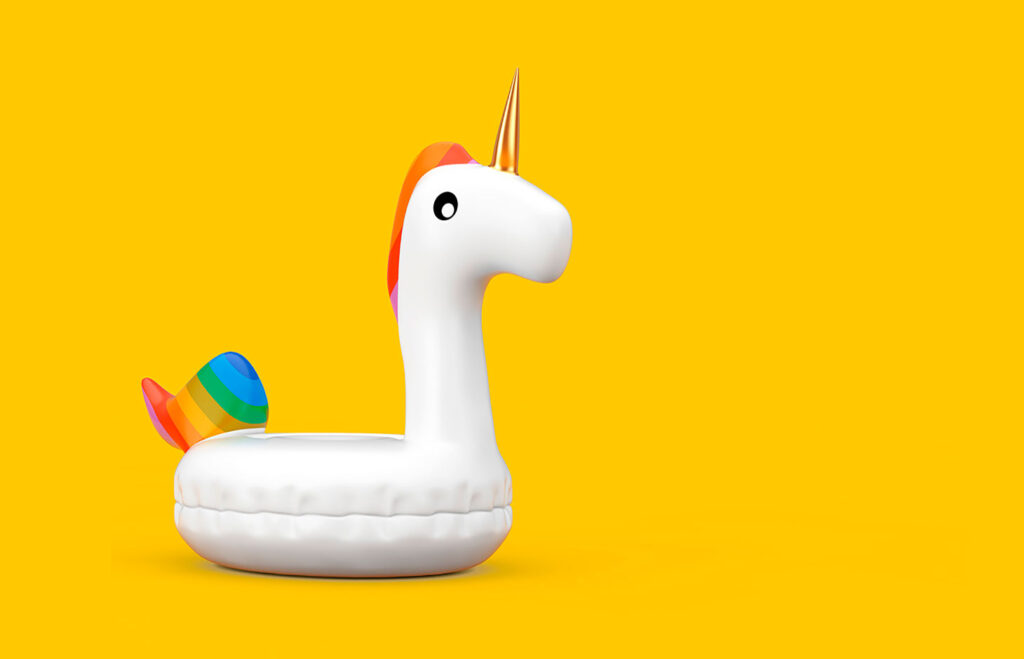A few years ago, we wrote about T2D3—a method for SaaS businesses looking to earn a $1 billion valuation within five years.
The approach is known as “triple, triple, double, double, double” (T2D3 for short) and calls for two years of tripling annualized revenue growth, then three years of doubling it. T2D3 originated with venture capitalists (VCs) looking for the pattern when deciding which SaaS businesses to invest in.
You can brush up on T2D3 in our previous article. But let’s get back to this article.
I’d like to talk about the changes in the SaaS space since T2D3 was all the rage and why some are saying the bar has been raised.
Enter: T3D3, which looks for—you guessed it—three years of tripling revenue growth followed by three years of doubling it.
$1 billion valuation? Try $10 billion
“Growth stage VCs aren’t hunting unicorns anymore, they’re hunting decacorns,” said SaaStr’s Jason Lemkin.
Lemkin is referring to SaaS brands valued at $10 billion, such as Monday.com.
In less than four years, Monday.com reached a valuation of $9 billion. This leaves the workflow platform well-poised to hit $10 billion within the 5-year timeframe T2D3 previously set for just a measly $1 billion valuation.
How did Monday.com do it?
Not quite by tripling revenue for the first three years, admittedly. Rather, the SaaS business began with $11 million in annual recurring revenue (ARR) in 2017, already well above T2D3’s call for an initial $2 million. From there, tripling for two years and doubling for one shot them way past the ultimate T2D3 goal of $100 million in ARR.
What’s caused this to become the new expectation?
The explosion of SaaS—in hyperdrive
Put simply, the exponential rise of SaaS has compounded investor expectations. The industry is forecast to generate close to $141 billion in 2022, up from $105 billion in 2020.
Why? Consider the following.
- SaaS is now ubiquitous. It’s in our homes, at our offices, at the businesses we frequent, tied to our travels, and more. For investors, SaaS is the new internet.
- It’s hard to imagine running a business today without the help of at least one SaaS product. Marketing, sales, subscription billing, accounting, customer success, and more all benefit from a variety of affordable and user-friendly digital platforms. In fact, 73% of tech CIOs plan to move most of their apps to SaaS.
- The impacts of COVID-19 simply accelerated this already light-speed industry growth. What was once highly desirable for optimization and efficiency became necessary as employees started working from home and various industries began seeking touch-free options for service delivery.
In 2021, new SaaS unicorns are no longer a rarity—they appear every week. The only notable thing about businesses with a $1 billion valuation today, it seems, is that there are so many of them.
Today’s potential SaaS decacorns
If SaaS is the new internet, decacorns are the new unicorns. And they aren’t impossible to find.
Broker eligibility tracker AgentSync is likely on its way to decacorn status, for example. As Alex Wilhelm at TechCrunch explained, the SaaS business started out with $1.9 million in ARR. This was right in line with the typical T2D3 approach.
However, AgentSync quickly showed it wasn’t going to wait a year to triple its ARR.
Just over six months later, it had already more than quadrupled it. ARR stood at nearly $10 million—and all that growth happened despite the pandemic.
Even more impressively, Wilhelm reports that crypto-trading enabler FalconX claims to have grown its net revenue 46X in less than a year. With estimated annual revenue already at $10 million to $50 million, growth anywhere near that pace over the next few years will easily solidify decacorn status.
Setting SaaS sights on higher valuations
For SaaS leaders vying for VC attention and aiming for $10 billion valuations, it’s helpful to return to basics and remind ourselves of the most important part of any business: the customers.
“SaaS providers are always innovating,” Andrew Butt, Co-founder and CEO at Enable, notes in Forbes, “but the most successful SaaS products are the ones that provide and enhance the essential features users are looking for: low cost of entry, flexible contracts and fees, strong customer support and a powerful, intuitive digital platform that can help employees collaborate and get the job done from anywhere.”
The flexibility of SaaS over legacy IT platforms ensures the industry’s growth into the future. Even as social distancing and working from home fall to the wayside, the convenience of cloud-based software and a low financial barrier to entry establishes SaaS as an essential part of modern businesses.
Achieve rapid ARR growth and 10X unicorn status by thinking beyond T3D3
SaaS leaders looking to ride this wave of capital raising and higher valuations can use the examples set by decacorns to inform decision-making. However, the rise of SaaS comes with plenty of competition.
To stand out, leaders will have to take a page out of Grant Cardone’s book, The 10X Rule, and multiply their efforts when it comes to the following.
- Flexibility and agility. How easy is it for users to customize their subscriptions to meet their needs? With usage-based pricing quickly catching up (and even surpassing) traditional SaaS pricing models, there’s a clear demand for subscriptions that allow customers to only pay for what they need.
- Onboarding. Once signed up, how quickly and easily can customers start using the software? Many SaaS businesses today offer free trials or a freemium pricing plan, so many people begin using platforms before they’ve even become paying customers. Optimizing onboarding sets your SaaS up for success.
- Customer success. Revenue growth relies on customer success with your product. You promised something, and you’ve got to deliver on it. If customers can’t accomplish their goals and achieve clear value with a subscription, they’ll simply unsubscribe.
- Sales, sales, sales. As our T2D3 post explained, all of this is only possible with an assertive approach to sales. Sales teams should intimately know their product’s ideal customer and know how to take advantage of market upswings to acquire best-fit subscribers. International and reseller efforts should focus on quality connections rather than a quantity of presence.
In a nutshell, SaaS leaders simply need to aim higher to reach the new bar set for modern businesses. Ten times the valuation takes an approach that accomplishes ten times the work.
Done intelligently and with the right tools, however, it won’t necessarily demand ten times the effort and time.
Using SaaS solutions to automate and optimize as many processes as possible, for example, SaaS businesses can help one another achieve their goals. With all that power combined, perhaps it’s only a matter of time before we’re aiming for $100 billion valuations.








